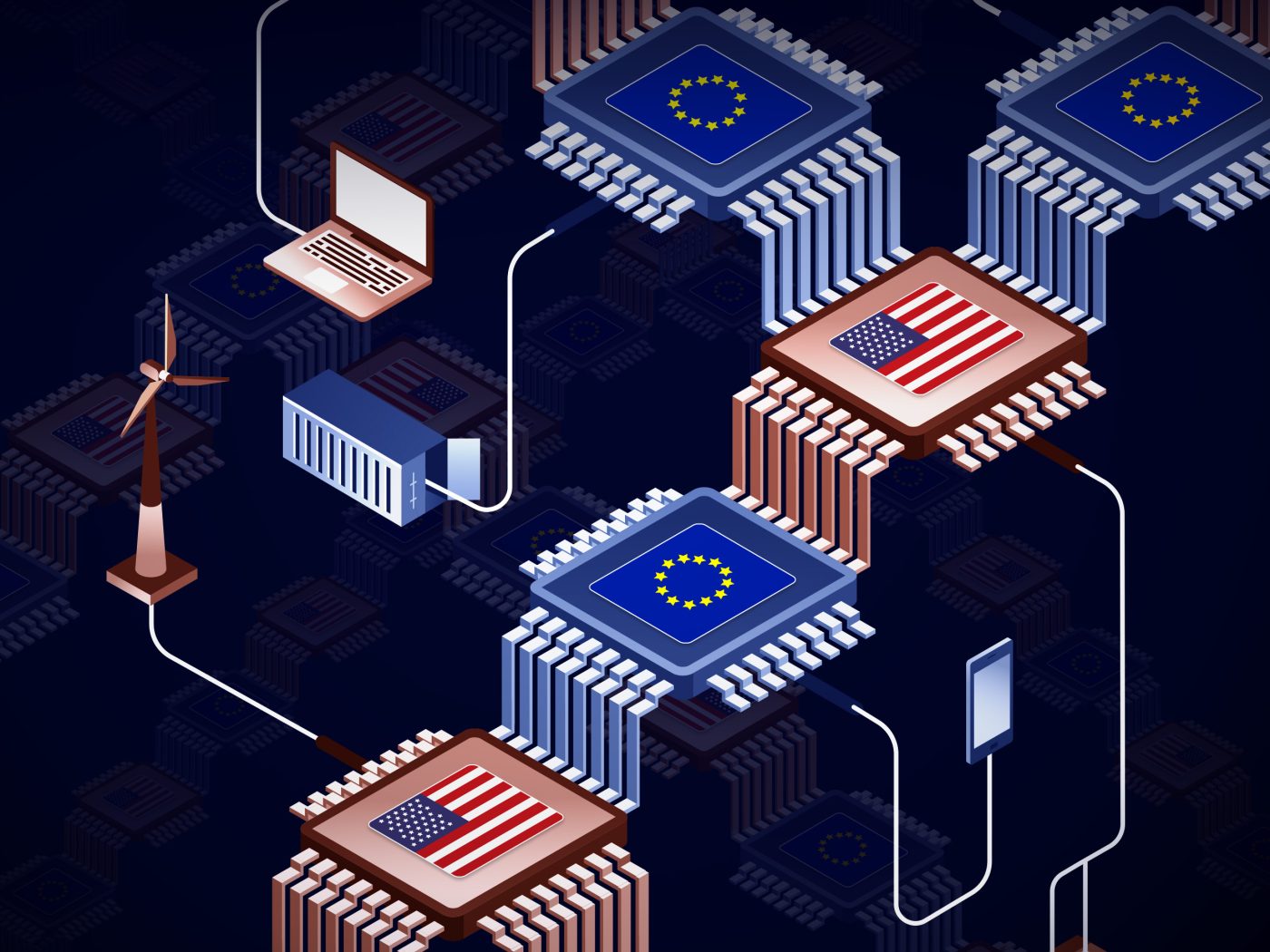China’s emergence as a tech and trade superpower threatens both the US and Europe. The allies are struggling to respond.
For more than two decades, China has worked to free itself from dependence on Western technology while making the West dependent on Chinese products. It protects priority industries and subsidizes them into becoming export juggernauts.
China engages in economic coercion. Its civil-military fusion strategy powers a significant buildup of its military, surveillance, and disruptive capabilities. Its aggressive territorial claims in the South and East China Seas, and its threats to Taiwan’s integrity, present real risks of military conflict. Beijing and Moscow’s declaration of a “no limits” strategic partnership, and China’s active support for Russia’s war on Ukraine, threaten US and European security, interests, and values.
Although the transatlantic partners are closer in their assessments of the China challenge today than they were four years ago, they approach Beijing from different strategic positions, with different tools, and with different senses of urgency. They have allowed their own bilateral squabbles to get in the way of robust transatlantic efforts to address Chinese aggression. These simmering problems could boil over in 2025.

This series analyzes the impact of China’s rise on transatlantic ties and presents ideas about how to forge a constructive partnership to meet the China challenge. It is based on a yearlong series of CEPA-sponsored workshops of leading European and US experts that I chaired together with Lucinda Creighton under the Chatham House Rule.
The basic question we addressed is whether Donald Trump’s new administration and Europe’s new leaders believe their own bilateral disputes are more or less important than the need to adopt joint or complementary approaches to China. Does the Trump administration believe it can and should fight predatory Chinese economic practices on its own, or forge a broad coalition of countries that could impose far greater costs on China than individual efforts? Are Europeans willing and able to bridge their own considerable differences over both China and Trump’s America to help lead such a coalition?
Get the Latest
Sign up to receive regular Bandwidth emails and stay informed about CEPA’s work.
A joint approach to China should be guided by three Ds: deconflict, disentangle, and deny. The US and Europe should deconflict their own bilateral ties so they do not endanger transatlantic cooperation on China. They should disentangle their economies from uncomfortable dependence on China. And they should deny critical technologies, data, or goods to China that could advance Beijing’s military capabilities and revisionist goals.
To deal with China, the transatlantic partners first need to deal with each other. A transatlantic accord could include European commitments to boost defense spending to 3% or more of gross domestic product by the end of the decade; bolster support for Ukraine; diversify from Russian energy; buy more US-produced liquified natural gas and other energy exports, agricultural products, and defense equipment; and refrain from levying unilateral digital services taxes on US firms. The US, in turn, could commit to maintain an active role in NATO, ensure Ukrainian security and sovereignty, refrain from imposing preemptive tariffs, and explore effective global tax reform.

The two parties should streamline the US–European Union (EU) Trade and Technology Council, now ensnared in an unwieldy tangle of many working parties, with three strong pillars. Pillar One would focus on mitigating US-EU disputes and advancing bilateral cooperation. It could include efforts to strike a quick trade deal to avoid a transatlantic trade war, finalize the Global Arrangement on Sustainable Steel and Aluminum, conclude critical minerals agreements, reduce trade costs by expanding conformity assessments, improve transatlantic risk assessments, and ensure that new EU laws such as the Digital Markets Act do not privilege Chinese and Russian tech over US firms. NATO allies should invoke Article 2 of the North Atlantic Treaty to promote defense-related innovation, and enhance screening of foreign investment in security-related infrastructure, companies, and technologies.
Pillar Two would address the China challenge: extending sanctions on Chinese actors for supporting Russia’s war efforts; improving and expanding coordination on export controls; restricting data flows to China, Russia, and other countries of concern; sharing information on nonmarket policies affecting digital trade; and improving inbound and outbound investment screening.

Pillar Three would include areas in which the US and the EU could address China-related issues by working with like-minded partners. These include strengthening and expanding cooperation on critical minerals, energy security and climate change; coordinating and enhancing efforts to counter Chinese theft of intellectual property; supporting the use of trusted vendors in digital technologies; reviving and expanding US-EU-Japanese talks on nonmarket economies; and promoting a “Free Road Initiative” to help allies develop more secure and resilient connectivity options.
It is an ambitious agenda. Any effort to forge joint or complementary US-European approaches to China could be a bridge too far. Yet the high stakes warrant exploring what a transatlantic deal on China might look like.
Daniel S. Hamilton chaired CEPA’s yearlong series of workshops examining the transatlantic response to the China Challenge. He is a Senior non-resident Fellow at the Brookings Institution and a Senior Fellow at the Foreign Policy Institute of Johns Hopkins University School of Advanced International Studies.
Bandwidth is CEPA’s online journal dedicated to advancing transatlantic cooperation on tech policy. All opinions are those of the author and do not necessarily represent the position or views of the institutions they represent or the Center for European Policy Analysis.
Read More From Bandwidth
CEPA’s online journal dedicated to advancing transatlantic cooperation on tech policy.


















